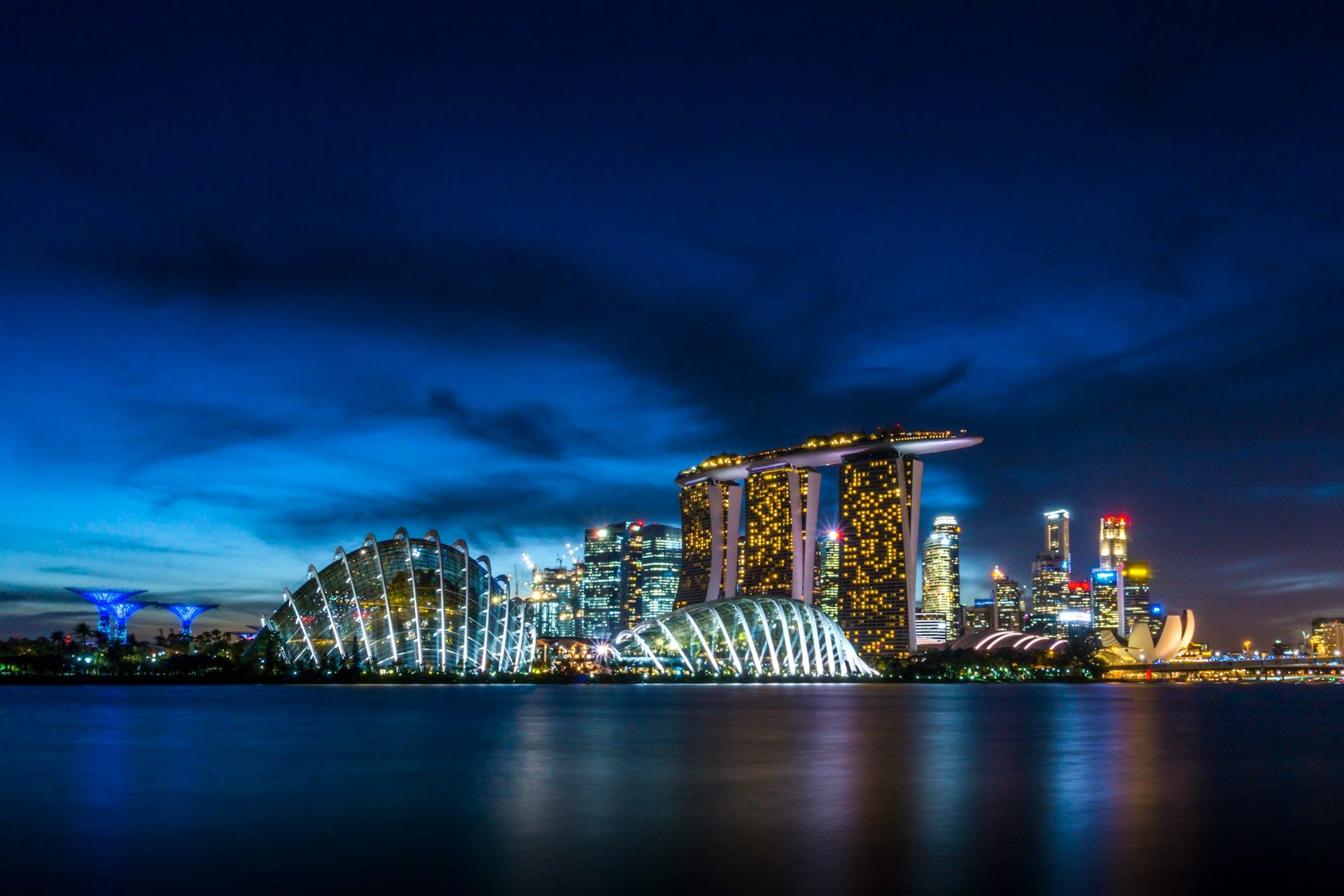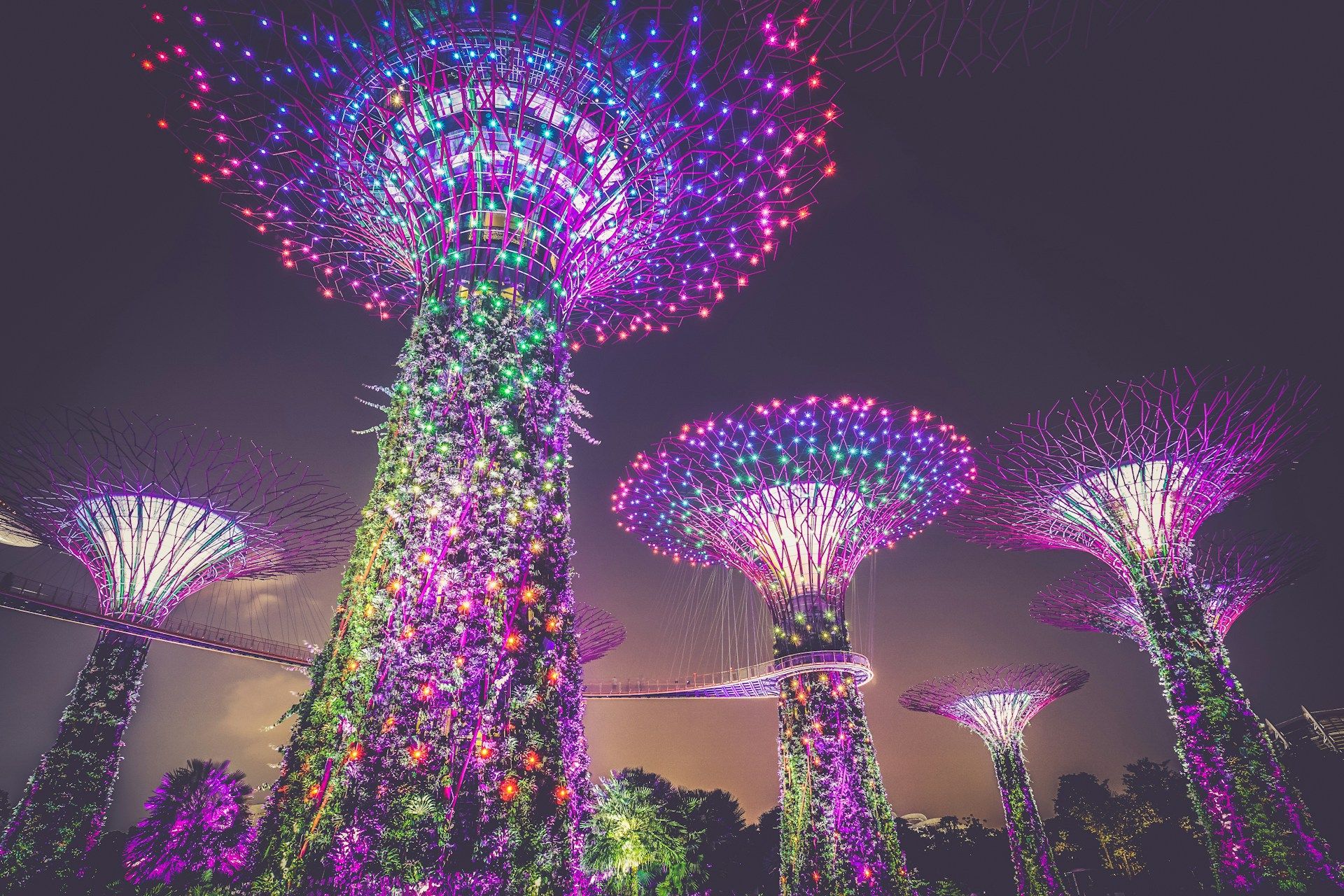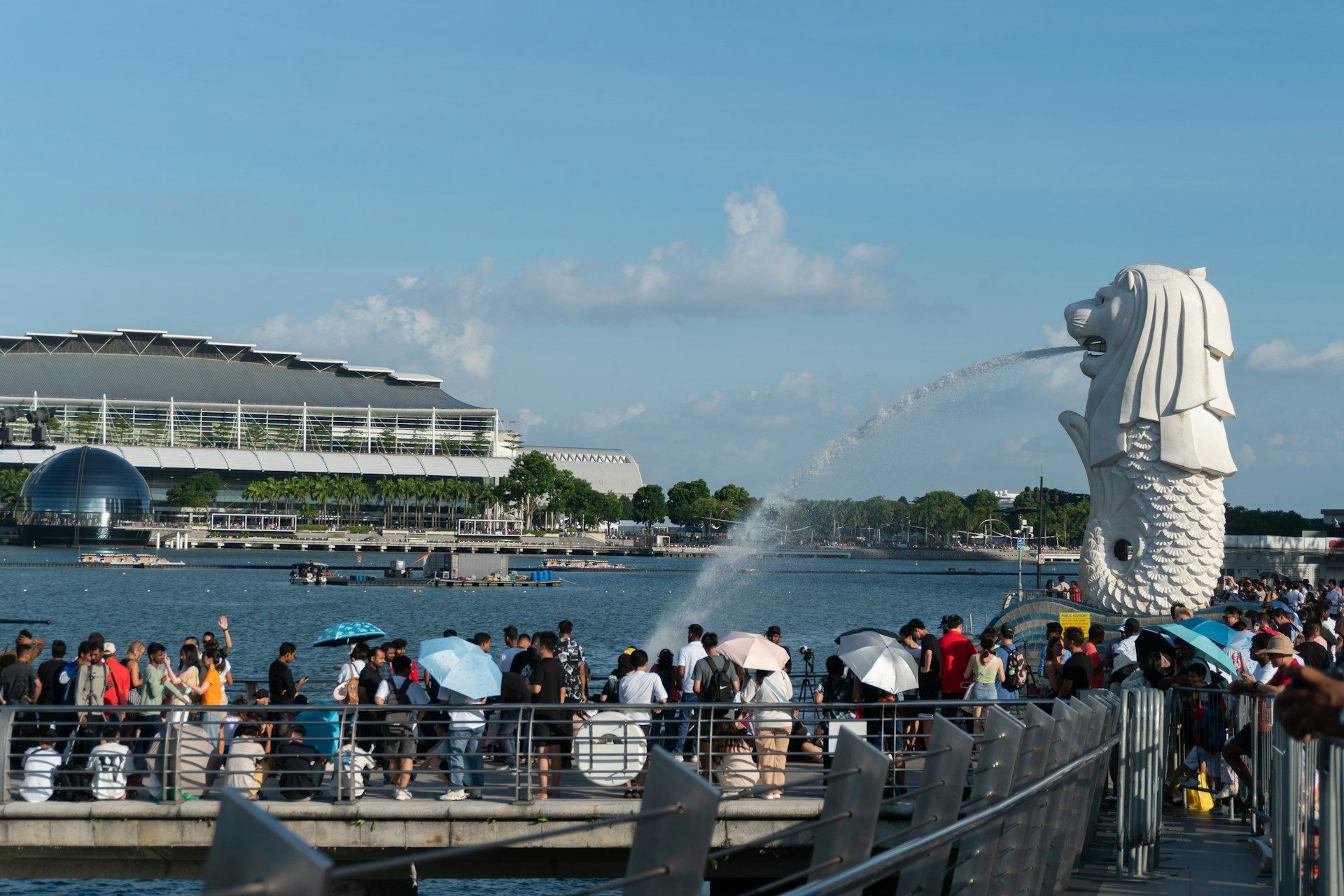Kapan waktu terbaik untuk mengunjungi Singapura?
Temukan waktu terbaik berdasarkan cuaca, festival, dan faktor lainnya.
Ringkasan
Singapura, yang dikenal sebagai "Kota Singa," merupakan perpaduan budaya, kuliner, dan objek wisata yang menarik jutaan pengunjung setiap tahunnya. Sebagai negara-kota tropis, Singapura umumnya menjadi tujuan wisata sepanjang tahun. Berencana untuk mengunjungi Singapura dan mencoba mencari tahu waktu terbaik? Memahami pola cuaca, festival, dan musim turis dapat membantu Anda menemukan waktu terbaik untuk berkunjung.

Memahami Cuaca Singapura
Singapura menikmati iklim hutan hujan tropis, yang berarti cuacanya hangat dan lembap sepanjang tahun. Singapura tidak mengalami empat musim yang umum, dan satu-satunya musim yang dapat dikatakan di Singapura adalah ‘hangat’ dan ‘sangat panas’; atau ‘hujan’ dan ‘sangat hujan’.
Sepanjang tahun, suhu udara biasanya berkisar antara 27°C hingga 34°C. Pada bulan-bulan yang lebih dingin (biasanya dari November hingga Februari), suhu udara terkadang dapat turun antara 22°C hingga 26°C. Namun, suhu yang lebih rendah ini sering kali disertai dengan banyaknya curah hujan.
Singapura mengalami hujan yang sangat sering, terutama selama musim hujan dari November hingga Januari dan Juni hingga September. Hujan kadang-kadang berlangsung singkat, tetapi tidak jarang terjadi hujan sepanjang hari.

Waktu Terbaik untuk Mengunjungi Singapura Berdasarkan Cuaca
Meskipun cuaca di Singapura cukup konsisten, musim kemarau antaraFebruari dan April dianggap sebagai waktu terbaik untuk berkunjung. Selama bulan-bulan ini, hujan lebih jarang turun, dan langit cenderung lebih cerah. Periode ini ideal untuk kegiatan luar ruangan, bertamasya, dan mengunjungi taman dan kebun terkenal di Singapura.
Cuaca panas dan lembap mungkin bisa tak tertahankan dari bulan Mei hingga Agustus bagi mereka yang tidak terbiasa dengan cuaca Singapura. Bulan November hingga Februari sering kali memiliki suhu paling dingin, tetapi juga merupakan bulan-bulan terbasah sehingga dapat memengaruhi rencana wisata Anda.
Waktu Terbaik untuk Mengunjungi Singapura Berdasarkan Festival dan Acara
Singapura terkenal dengan keberagaman budayanya, dan ada beberapa festival meriah sepanjang tahun yang dapat membuat perjalanan Anda semakin istimewa.
- Tahun Baru Cina (Januari atau Februari): Ini adalah salah satu perayaan terbesar di Singapura. Pecinan menjadi ramai dengan parade, tarian naga, dan pertunjukan lampion. Waktu terbaik untuk berkunjung adalah beberapa hari menjelang Tahun Baru Imlek. Jika kunjungan Anda bertepatan dengan Tahun Baru Imlek, perlu diketahui bahwa sebagian besar toko akan tutup pada dua hari pertama Tahun Baru Imlek, dan beberapa mungkin tutup lebih lama.
- Hari Raya Idul Fitri: Dirayakan oleh komunitas Muslim di Singapura, festival ini menandai berakhirnya bulan Ramadan. Geylang Serai dan Kampong Glam dihiasi dengan dekorasi, menjadikannya waktu yang tepat untuk merasakan budaya lokal.
- **Great Singapore Sale (Juni hingga Agustus):**Bagi mereka yang ingin mendapatkan diskon belanja, pertimbangkan untuk berkunjung selama periode Juni hingga Agustus. Meskipun beberapa tahun terakhir ini tidak terlalu ramai dengan Great Singapore Sale, bukan hal yang aneh melihat toko-toko ritel mengadakan obral dan diskon selama periode ini.
- Grand Prix Singapura (September): Para penggemar Formula 1 berbondong-bondong ke Singapura untuk menyaksikan balapan malam yang seru ini. Kota ini berubah menjadi arena bermain berbagai acara, konser, dan pesta selama akhir pekan balapan.
- Deepavali (Oktober atau November): Festival cahaya Hindu adalah acara meriah lainnya. Little India dihiasi dengan lampu-lampu yang memukau, pertunjukan tradisional, dan pasar jalanan.
- **Natal (Desember):**Meskipun Singapura mungkin tidak berada di urutan teratas daftar tempat untuk merayakan Natal, Natal di Singapura cukup meriah dengan lampu-lampu Natal dan acara-acara khusus di tempat-tempat wisata utama. Akan sangat menarik untuk melihat bagaimana mal-mal beralih dari dekorasi Natal ke dekorasi dan perayaan Tahun Baru Imlek segera setelah Natal berakhir.
Waktu Terbaik untuk Mengunjungi Singapura untuk menghindari keramaian
Jika Anda ingin menghindari keramaian,Juli hingga September Dan Januari hingga pertengahan Maret dianggap sebagai periode low-season. Selama bulan-bulan ini, Anda dapat menemukan penawaran hotel yang lebih baik, dan objek wisata populer cenderung tidak terlalu ramai.
November-Desember bertepatan dengan liburan sekolah di Singapura, yang berarti lebih banyak keluarga di tempat wisata. Namun, meskipun mungkin ada lebih banyak keluarga di tempat wisata ramah keluarga, secara umumlebih sedikitorang-orang di mana-mana, karena keluarga Singapura berbondong-bondong ke luar negeri untuk menikmati liburan mereka sendiri.

Waktu termahal untuk mengunjungi Singapura
Harga akomodasi bisa menjadi lebih mahal di Singapura selama periode ini:
- **Paruh kedua Juli hingga awal Agustus:**Permintaan hotel meningkat pada akhir pekan selama periode ini, bahkan saat warga Singapura berusaha mendapatkan kamar untuk menyaksikan pertunjukan kembang api dalam rangka perayaan Hari Nasional Singapura.
- **Juni dan November-Desember:**Liburan sekolah juga sering kali berarti harga akomodasi yang lebih tinggi karena keluarga memesan satu atau dua malam untuk menginap. Pemesanan akomodasi selama Natal dan Tahun Baru juga sering kali jauh lebih mahal.
Tetap terhubung di Singapura dengan eSIM Nomad Travel
Kapan pun Anda berkunjung, Anda dapat tetap terhubung di Singapura denganNomad travel eSIM untuk SingapuraeSIM Nomad memberi Anda akses keeSIM data terjangkau di lebih dari 170+ tujuan di seluruh dunia—termasuk Singapura.
Pilih dari berbagai paket data lokal, regional, dan global, beli dan pasang eSIM Anda sebelum terbang, dan sambungkan ke jaringan seluler dalam beberapa menit setelah tiba. Kehabisan data di tengah perjalanan? Cukup beli add-on di aplikasi Nomad.
Jika Anda juga akan mengambil kesempatan untuk mengunjungi negara lain di wilayah tersebut, Nomad juga menawarkan paket regionaleSIM untuk Asia Tenggara, memungkinkan Anda tetap terhubung dengan lancar saat menjelajahi kawasan tersebut.